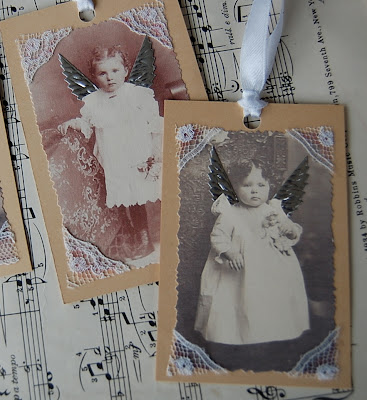Stick a Fork In Me
Last week, I took a whirlwind of a trip to New Orleans so that the fine folks at Rust-Oleum could show off their new Transformations products to me and a handful of other Bloggers. I think the new products are really, really going to change a bunch of people’s lives (or at least the lives for their kitchens), and I will be sharing all about them very soon.
In the meantime, I want to show you a little craft I picked up while I was in the Big Easy. During our Welcome Dinner, my friends at Rust-Oleum used the most adorable place card holders on the tables.
You should have heard us squealing in delight. Then, when we were told we could take them home, we acted like we were just given diamond rings.
I have no idea where they bought these cute fork place card holders, but I think they would be adorable for business card holders, recipe card holders, photo print holders, and everything else in between. I knew I had to figure out how to make them. So, the day after I got home, before I even unpacked my suitcase, I ran to the antique store to buy some forks so that I could show the process to you.
(UPDATE! The original fork place card holders were made by David of the incredible shopBasilicusJones on Etsy. Please check out his shop – I am dying over what he does with vintage flatware – and his forks are way better than mine and come at a great price. Also? I seriously want his spoon bracelet…)
Fork Place Card Holders
Supplies:
- Silver Plated or Sterling Silver fork – obviously, the SP is cheaper than SS (mine were 75-cents a piece). Steer clear of stainless steel (which you probably use on a daily basis), because it’s too hard to bend.
- Vise
- Rubber mallet
- Utensil w/ cylindrical handle – I used a wire whisk
- Pliers
Instructions:
Now, I’m sure that there are a hundred different ways to do this. My husband, who does a lot of metal working as a hobby, was pretty flabbergasted that this was the way I decided to do it. He said it would be a lot easier with a propane torch, but I wanted to keep the supplies limited to what my readers most likely had at home. Do a lot of you have propane torches? I didn’t think so.
1. To begin, I brought my vise in from the garage and set it right on top of a cutting board on my granite counter top. Yep, I’m fancy (and am apparently lucky I didn’t crack my granite). I put one of the forks in the vise like so:
2. Using a rubber mallet, I hammered the top of the fork backwards into a 90-ish-degree angle.
3. Then, I pulled the fork out of the vice about and inch and hammered that part backwards into another 90-ish-degree angle.
4. Then, I adjusted the fork so that it was in the vice like so. Do you see how I have my little pink footed helper in the background? That’s certainly not a requirement, but it does help.
5. With the rubber mallet, I hammered the handle of the fork over to the left a bit. I know the “a bit” part is really scientific, isn’t it?
6. Then, I stuck my wire whisk into the bend and folded the handle over so that it made a curved bend. I was able to do that part with my fingers, so I didn’t need to hammer my whisk.
7. Next, I flipped the fork around so the tines were in the vice and hammered the flat edge to make sure it was nice and flat. If there’s much curve to it, the fork isn’t going to sit upright.
8. With a pair of needle nose pliers, I bent the tops of the outside tines forward and the middle tines backward. Then, I stuck them in my vice and crushed them.
9. Here’s where the fine tuning comes in. I just had to bend and play with it a little bit to make sure the fork stood up straight. I just used my fingers to do this. Every fork is styled differently, which means it’s weighted differently, so you’ll just have to play around with your particular fork.
These little forks are just so fun an unexpected. I used them to hold my 1940s vintage valentines, but they will soon move on to displaying printed photos.


 I
I














